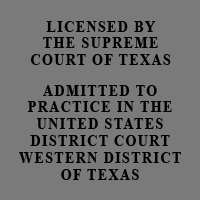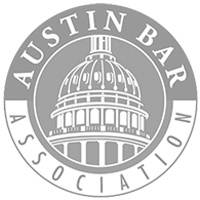Defective Tire Rollover Lawsuits, Fatal Defective Tire Blow Out Lawsuits, Deadly Defective Tire Tread Lawsuits, Defective Automobile Roof Design Lawsuits, and Fatal Automobile Accident Rollover Lawsuits by Defective Tire Rollover Automobile Crash Lawyer Jason S. Coomer
Defective tire blow out automobile product liability lawsuits include defective tire blowout lawsuits, defective tire rollover lawsuits, tire defect rollover lawsuits, tire defect blowout lawsuits, defective tread lawsuits, defective tire tread lawsuits, and defective rollover design lawsuits. Unfortunately, tire defects can cause blowout rollover accidents that can often be deadly and kill vehicle occupants including drivers and passengers.
If you have lost a loved one in a fatal tire blow out automobile rollover collision or have been injured by a tire defect automobile crash, feel free to submit an inquiry or send an e-mail to Texas Defective Tire Blowout Accident lawyer Jason Coomer.
Fatal Rollover Crash Defective Design Lawsuits, Catastrophic Injury Defective Design Rollover Lawsuits, Fatal Roof Collapse Defective Design Lawsuits, Catastrophic Injury Defective Roof Design Lawsuits, and Automobile Accident Collapsed Roof Lawsuits (Product Liability Defective Design Roof Collapse Lawsuits)
Vehicle and Tire Manufacturers have known for decades that defective tires and tread defects can cause a blow out that can result in a deadly crash or a fatal roll over accident. This is especially true in the summer months when paved roads, streets, and highways can become extremely hot.
Tire defect lawsuits are a special subgroup of automotive products liability lawsuits and fatal rollover accident lawsuits. This is because tire defect blow out lawsuits provide an independent product liability cause of action against the tire manufacturer as well as tire replacement centers. But, if the defective tires are original equipment on a vehicle, a fatal or deadly tire blow out lawsuit may also create a viable defective blowout lawsuit against the vehicle manufacturer. The Ford/Firestone litigation of a few years back brought the issue of tire defects into the forefront of public knowledge. Until then, people did not know a tire could just fail and blow out in the normal course of use.
The Ford/Firestone litigation was based on claims of design defects in the Firestone tires. The majority of tire cases before and after the Ford/Firestone litigation are based on claims of manufacturing and design defects that caused catastrophic injury and fatal blow out tire rollover accidents. A tire defect, oftentimes referred to as a tire delamination or tire detread, usually involves the bottom layer of steel belts separating from the second layer of steel belts and outside tread sometimes causing the defective tire to come apart and blowout. When this delamination or detreading occurs it is common to find a large strip of tread, and sometimes accompanying smaller pieces, separating from the tire while in use. This separation will often identify a tire delamination.
A delamination will significantly decrease a person’s ability to control the vehicle and will sometimes result in an accident. It is common for people to refer to these tire events as “blowouts.” A blowout is a sudden loss in air pressure. A tire delamination does not necessarily entail the loss of air pressure. Sometimes the tire will lose the tread but retain its air pressure through the entire accident sequence.
After a blowout or other fatal tire defect accident it is important to investigate the tires and their condition to determine if a tire defect, delamination, or detread was the cause of action accident or rollover. Are there large pieces of treads missing? Do the tires have air pressure or will they still hold air? How are old the tires (determined by the DOT number)? The tire and all tread pieces should be quickly secured and stored in a climate controlled area.
Also in investigating a catastrophic injury or deadly tire defect accident, it is important to speak with the occupants of the vehicle and any potential witness to determine if a blow out or tire detread occurred. A classic scenario in a tire delamination is testimony from passengers in the vehicle that a loud banging or slapping noise in the wheel-well of the tire that failed occurred immediately before losing control of the vehicle. This indicates that the tread was coming off and hitting the wheel well as the tire rotated. Also, in investigating a defective tire crash it is important to ask the occupants about how the car felt and acted during and after the tire event.
In addition to the products claim against the tire manufacturer, the prudent defective tire blow out accident lawyer should also investigate the possibility of a negligence claim against the entities that maintained or installed the tire. The negligence claim can stem from an improper tire size, rim size or tire/rim combination. It can also be based on an entity’s failure to inform a customer of signs of impending failure of a tire. Tire cases are uniquely technical in terms of the chemistry and other science involved. These are expert intensive cases. Only an expert will be able to make a proper determination on why, and if, the tire failed. It is therefore important to have the vehicle and tire to examine, speak to all important witnesses, as well as obtain a complete vehicle history when investigating a defective tire blow out or detread accident lawsuit.
Investigating Fatal Tire Defect Collisions, Deadly Tire Blow Out Crashes, and Commercial Vehicle Crashes Typically Requires Preservation of Evidence and Discovery Requests for Important Records
Investigating a deadly crash, fatal collision, catastrophic injury car wreck, truck collision, or commercial vehicle accident usually requires preserving evidence and seeking records from the police, wreckage yard, black box experts, trucking company, defendant driver, truck driver, and insurance company to determine what caused the accident. For more information on preservation of evidence and obtaining important records & evidence relating to a fatal, catastrophic injury, defective airbag, or truck collision, please go to the following web page Accident Investigation web page.
Additionally, automobile and car wrecks that kill people
including fatal crashes and deadly impact collisions
commonly require a lawyer that is familiar in handling
wrongful death lawsuits and survival action lawsuits.
In thoroughly investigating the death of a loved one,
it is important to understand the potential different types
of compensation that can be obtained through the Texas legal
system and insurance policies. Under Texas law there
are two main types of death actions, there is the wrongful
death claim that is available to the spouse, parents, and
children of a person that has been wrongfully killed by the
negligent actions of another. There is also a survival
action that passes through the decedent's estate and
allows the heirs or beneficiaries of a decedent to seek
compensation. The Wrongful Death Lawsuit seeks money
compensation for the parents, spouse and children of the
decedent based on a variety of factors including:
- Loss of love, companionship, comfort, assistance,
protection, affection or care
- Loss of financial support
- Lost benefits, such as insurance, from the death
- Loss of inheritance from an untimely death
The survival action lawsuit are claims for what the decedent
would have recovered had the person survived the accident.
These claims travel through the decedent's estate and either
go to their heirs or beneficiaries depending if the person
had done any estate planning. These damages include:
- Expenses associated with the death
including funeral costs
- Medical expenses prior to the death
- Pain and suffering associated with the untimely death
Feel free to go to the following web page for more information on investigating and pursuing fatal and deadly crash lawsuits.
Fatal Rollover Crash Defective Design Lawsuits, Catastrophic Injury Defective Design Rollover Lawsuits, Fatal Roof Collapse Defective Design Lawsuits, Catastrophic Injury Defective Roof Design Lawsuits, and Automobile Accident Collapsed Roof Lawsuits (Product Liability Defective Design Roof Collapse Lawsuits)
Manufacturers have known for decades that vehicles roll over in reasonably foreseeable accidents. With the rise in popularity of SUVs and pick-up trucks, the number of people who are susceptible to vehicles rolling over has increased significantly over the last 20 years. However, in light of the fact that more people are affected by rollovers, most vehicle manufacturers have not increased the strength of the roofs in their SUVs and pick-ups.
Roof crush, or “loss of occupant survival space,” creates many problems for occupants in the vehicle. First, it rapidly reduces the space in the vehicle for the occupant. This will increase the risk that the occupant will receive a spinal cord compression injury. Second, roof deformation does not happen straight down but rather down and in toward the occupant. This significantly increases the likelihood that a properly belted occupant will be partially ejected out of the vehicle during the roll sequence. Typically the force of the roll coupled with the glass shattering out of the window, the roof crushing down and inward and the seatbelt not properly securing the occupant to the seat will result in the occupant having his or her head and/or arm and shoulder out of the vehicle during the roll. As will be discussed below, there are other ways to keep an occupant in the vehicle during a roll but a roof that stays in place during a roll reduces the risk of a person being partially ejected or receiving a compression injury even without the other safety measures.
The most common injuries associated with roof crush are spinal cord compression injuries and death. Many automobile manufacturers have taken the position, especially in spinal cord compression injury cases, that the injury was caused by the occupant “diving” into the roof. The term “diving” comes from the analogy of swimming pool diving injuries to compression injuries sustained in rollovers. With this defense, the automobile manufacturers maintain the injury occurs before the roof crushes in by the head moving toward the roof until it can go no further and the weight of the occupant’s body moving toward the head until there is such loading on the neck that a spinal injury occurs. Vehicle manufactures allege through testing and expert testimony that when a vehicle is inverted, the forces of gravity and the roll sequence will lead to an occupants head contacting the roof without any roof crush. They allege that there is no alternative roof design that can stop this from happening.
Partial ejections are also common in rollover accidents because the roof crushes down and in toward the occupant. When the roof crushes down and in, the force of the roll causes the occupant’s head to get outside the plane of the vehicle. In a partial ejection, it is common for an occupant to hit his or her head against the ground or pavement or get it caught between the car and ground during the roll. Vehicle manufacturers often argue that no matter the strength of the roof, a belted occupant can get their head out of the car during a roll. But if you keep the roof from deforming more than 3 inches during a rollover, restrained and contained occupants cannot get their heads out of the plane of the vehicle and sustain a catastrophic injury. The most important series of tests that address the causal relationship between occupant injuries and roof deformation are Malibu I and Malibu II. These were dolly rollover tests performed with Chevrolet Malibus (some with production roofs and others with reinforced roofs that did not deform during the rollovers). The vehicles were equipped with Hybrid III test dummies (in Malibu I the dummies were unrestrained and in Malibu II the dummies were properly belted). Vehicle manufacturers use the Malibu tests to argue the roof crush does not actually cause the injury.
The test data demonstrates, however, that there is a causative relationship between the strength of the roof and significant neck loading. Analysis of the Malibu testing and other testing that has been performed by the automotive industry and others is beyond the scope of this paper, but it is important for anybody handling a roof crush case to be well-versed in all of this testing. When analyzing a roof crush case, it is important to analyze the extent of the roof deformation. This will require measurements that can be done by a trained attorney or investigator. Further, as discussed above, the accident reconstruction will provide much information that will allow an analysis of a roof crush case. Trip speed, roll velocity, number of rolls, drop height and the type of roll (barrel, end over end or football) are all needed to analyze whether or not a safer alternative design existed that would have kept the occupant compartment space preserved during the roll.
Automobile Accident Defective Crashworthiness Product Liability Lawsuits and The Crashworthiness Doctrine under Texas Law and Federal Law
Defective Automobile Accident Lawsuit Crashworthiness cases involve claims that a design defect caused or enhanced the injuries of a vehicle’s occupants during an automobile crash. To identify a crashworthiness claim, one must examine the interplay among the circumstances of the accident, the performance of the vehicle during the accident, and the injuries suffered. Such defects may cause a minor injury automobile collision to become a fatal automobile collision or cause enhanced injuries by failing to provide suitable protection from injury or death in foreseeable automobile accidents. Crashworthiness lawsuits have taken many forms, both in Texas litigation and throughout state and federal courts.
For more about the Crashworthiness Doctrine, please go to the following web page with information on the United States Federal and Texas Crashworthiness Doctrine.
United States and Texas Catastrophic Injury and Fatal Tire Defect Crash Lawyers and Deadly Defective Tire Blowout Lawyers (Product Liability Defective Tire Blowout Lawsuits)
As a Texas Defective Tire Blowout Fatal Accident Lawyer, Jason Coomer, works on Texas Fatal Rollover and Defective Tire Lawsuits involving serious injuries and fatal automobile collisions all over the State of Texas and throughout the United States. In working on Texas Tire Defect Blowout Accident Law Suits, Jason Coomer commonly works with other Texas Fatal Defective Tire Blowout Accident Lawyers throughout Texas and the United States including Houston Fatal Defective Tire Detread Accident Lawyers, Dallas Fatal Tire Defect Roof Collapse Rollover Lawyers, El Paso Defective Tire Tread Crash Lawyers, and San Antonio Defective Tire Blowout Accident Lawyers. In working with other Defective Tire Blow Out Automobile Accident Lawyers, he is able to more efficiently investigate and litigate catastrophic injury and fatal automobile crash and deadly car wreck lawsuits that are caused by defective automobile design or parts.
Texas Defective Tire Blow Out lawyer, Jason S. Coomer, helps individuals that have been seriously injured and the families of people that have been killed as a result of defective tires, defective treads, defective rollover design, defective roof design, and other a unsafe vehicle crash lawsuits. If you have a question about a defective air bag or defective automobile claims, contact Austin Texas Defective Tire Blowout Fatal Crash lawyer Jason Coomer.
Feel Free to Contact Us with any Questions
Associations




